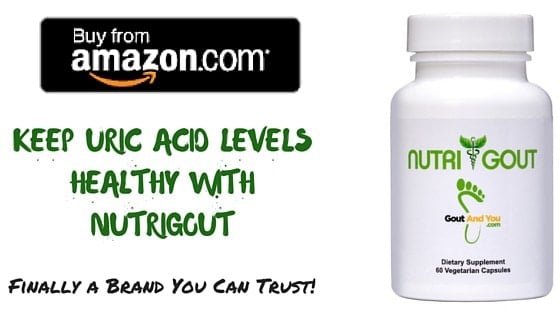Quel rôle joue le magnésium dans un régime contre la goutte ?
Le magnésium est un minéral alcalin présent dans de nombreux aliments tels que les légumes verts à feuilles comme la romaine, la laitue, les épinards, les noix et les céréales complètes. Le magnésium remplit de nombreuses fonctions dans votre corps, aidant à contrôler la quantité de calcium dans votre corps, les fonctions musculaires ainsi que votre cœur et vos reins. Mais en ce qui concerne les personnes souffrant de la goutte, saviez-vous que le magnésium aide à mieux faire circuler votre sang ?
Le magnésium réduira votre pression artérielle, permettant à votre cœur de travailler plus efficacement et réduisant toute tension excessive sur celui-ci. Plus votre sang circule facilement dans votre corps, plus votre corps peut éliminer l'acide urique en excès, évitant ainsi toute cristallisation dans les articulations qui peut causer une crise de goutte. En fait, le magnésium a été démontré comme pouvant être un traitement efficace pour les cas aigus de goutte..
Si vous présentez des signes de carence en magnésium, vous pourriez être susceptible de développer la goutte. Beaucoup de personnes sont déficientes en magnésium et ne le savent même pas. Il y a quelques symptômes clés à surveiller qui pourraient indiquer cela, comme des crampes dans les jambes régulières, de l'insomnie due à l'anxiété, de l'agitation et de l'hyperactivité. Vous pouvez également ressentir des douleurs musculaires et/ou de la fibromyalgie, pour lesquelles le magnésium a montré qu'il aidait à diminuer les symptômes. De plus, la fatigue, l'anxiété, le diabète de type 2, les migraines et l'hypertension artérielle peuvent également indiquer que vous êtes déficient en magnésium.
Si vous êtes déficient en magnésium, vous devez absolument ajouter des aliments riches en magnésium à votre régime alimentaire ou prendre des suppléments de magnésium pour compenser. Assurez-vous de parler à votre médecin avant de commencer à prendre des suppléments de magnésium. Ils peuvent produire des effets secondaires mineurs qui disparaissent généralement après quelques jours, comme la diarrhée.
D'autres complications plus graves peuvent survenir si vous prenez plus de magnésium que ce que votre médecin recommande. Votre tension artérielle peut soudainement chuter trop bas.Vous pouvez éprouver une bradycardie, une condition dans laquelle votre rythme cardiaque ralentit à moins de 60 battements par minute. Trop de magnésium peut, dans des cas extrêmes, vous faire tomber dans le coma ou même entraîner la mort !
Saviez-vous qu'il est estimé que environ 80% des adultes peuvent manquer de suffisamment de magnésium dans leur corps ? Cela est dû à l'appauvrissement des sols qui réduit la quantité de magnésium présente dans les cultures. Un autre facteur est le taux élevé de médicaments sur ordonnance et d'utilisation d'antibiotiques qui endommagent notre tractus digestif au point qu'il ne peut pas être correctement absorbé. Il existe également des troubles digestifs dans l'intestin, qui entraînent une malabsorption du magnésium et d'autres minéraux.
Combien de magnésium devriez-vous avoir ?
Voici les apports nutritionnels recommandés actuels pour le magnésium selon votre âge et votre sexe, selon les National Institutes of Health :
- 14-18 ans : 410 mg pour les hommes ; 360 mg pour les femmes
- 19-30 ans : 400 mg pour les hommes ; 310 mg pour les femmes
- Adultes de 31 ans et plus : 420 mg pour les hommes ; 320 mg pour les femmes
- Femmes enceintes : 350-360 mg
- Femmes qui allaitent : 310-320 mg
